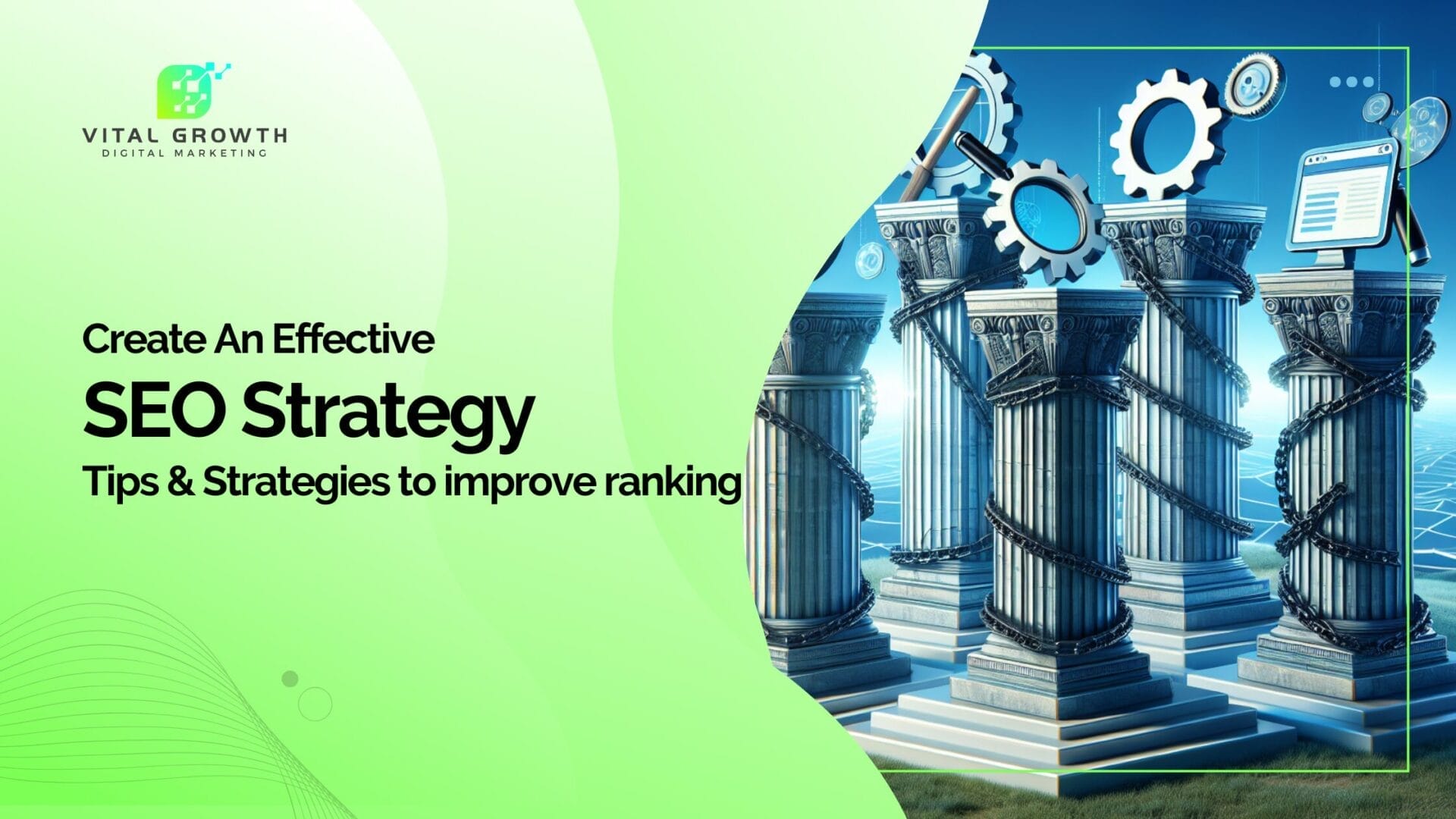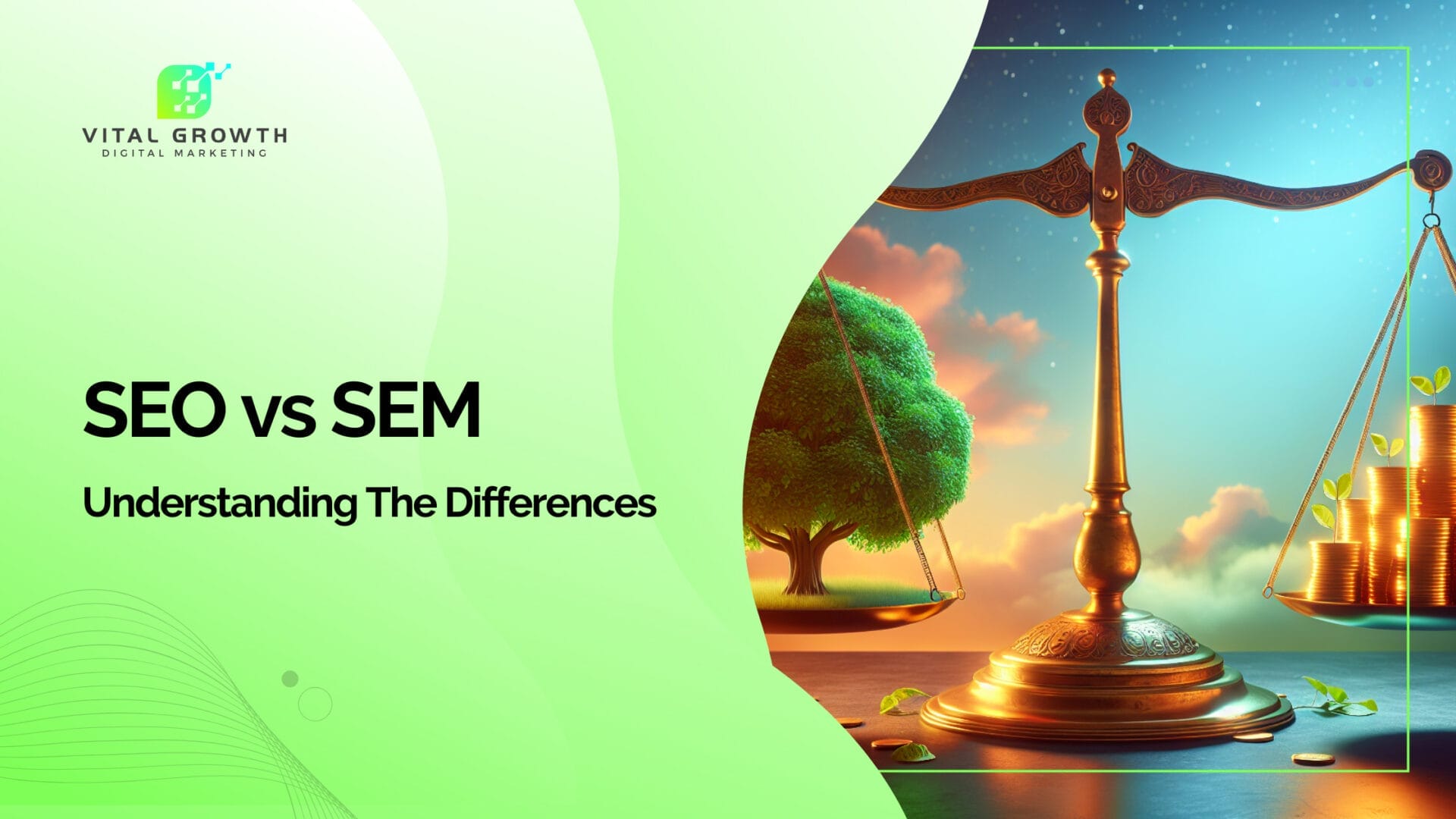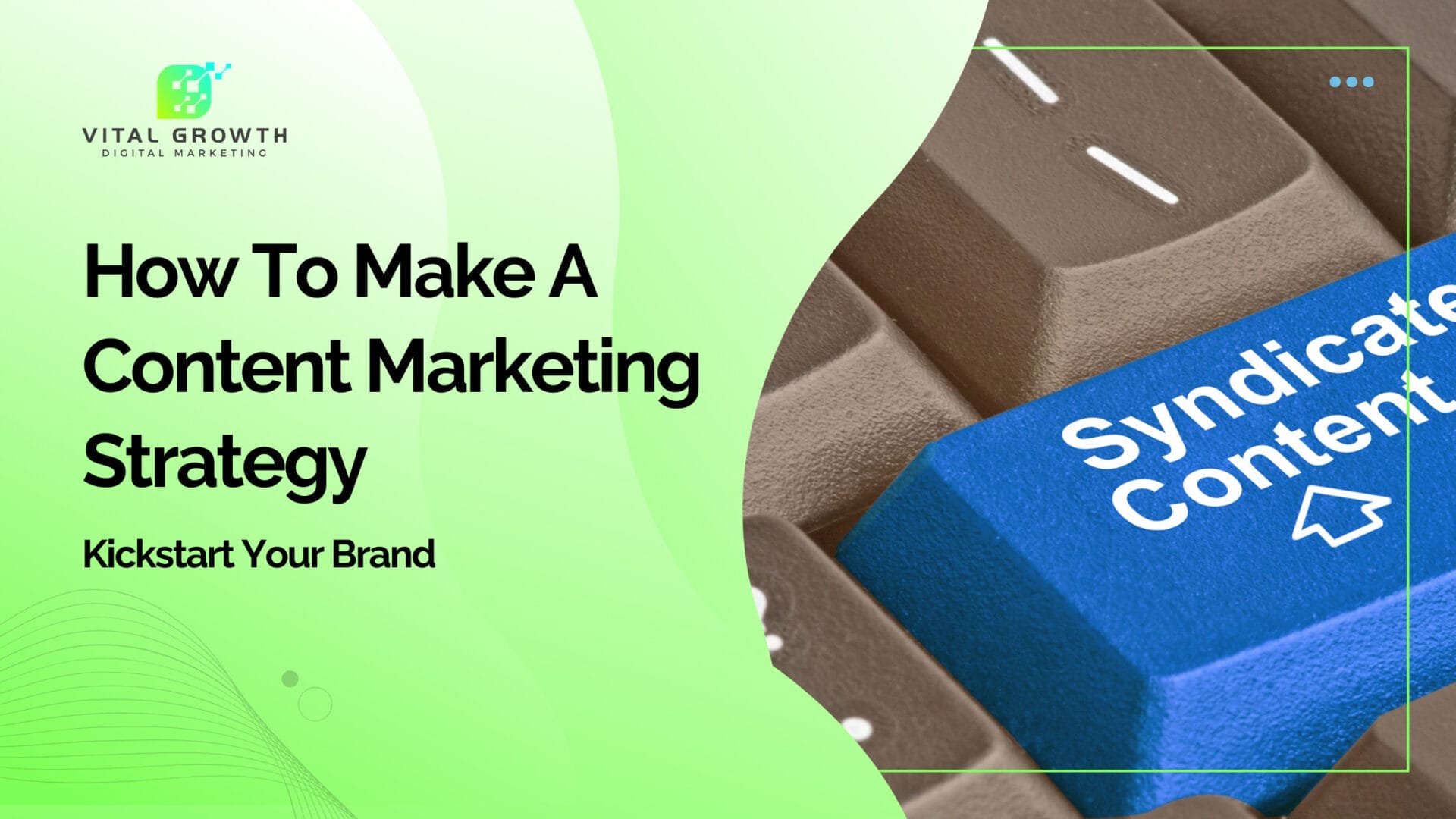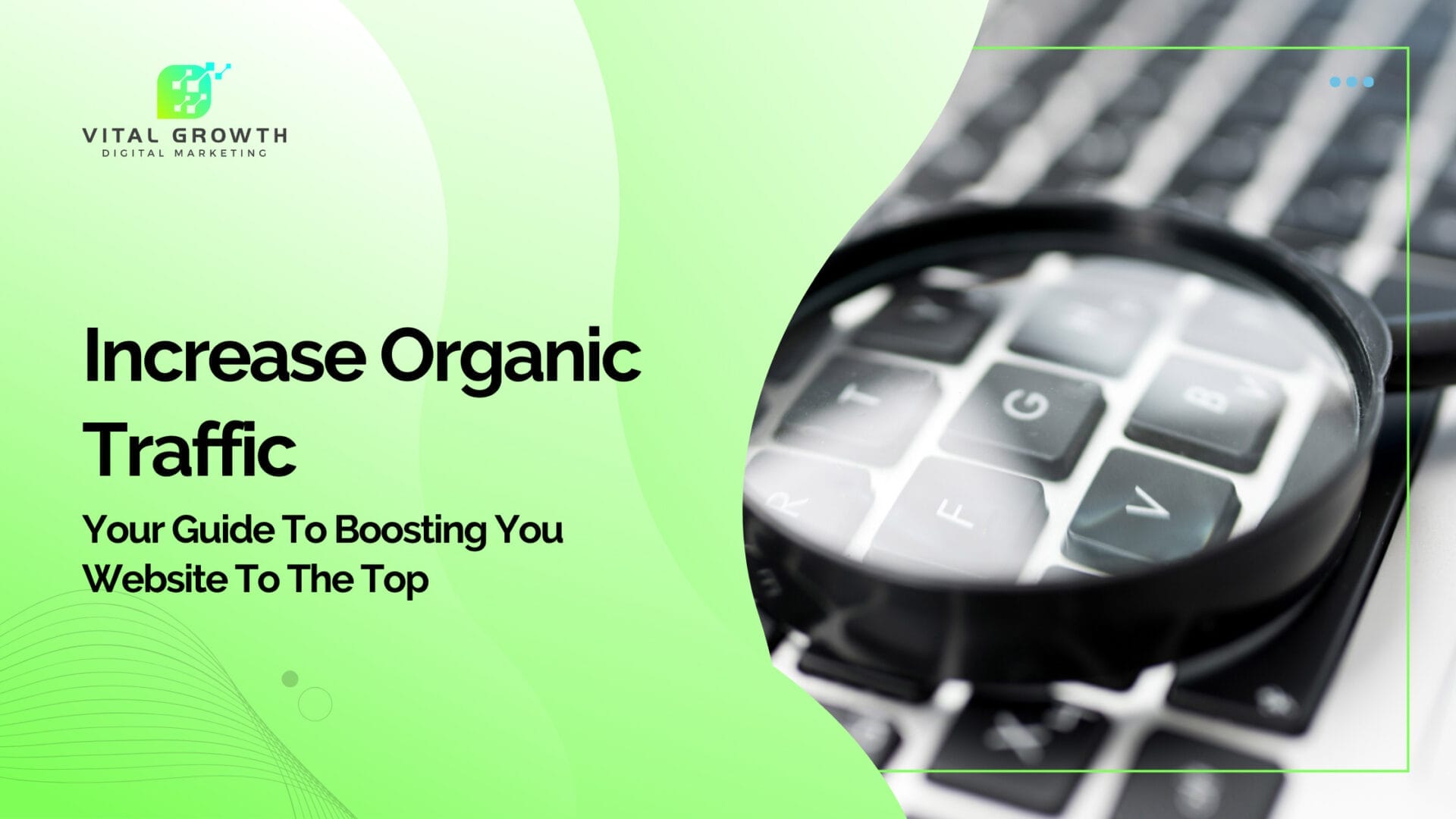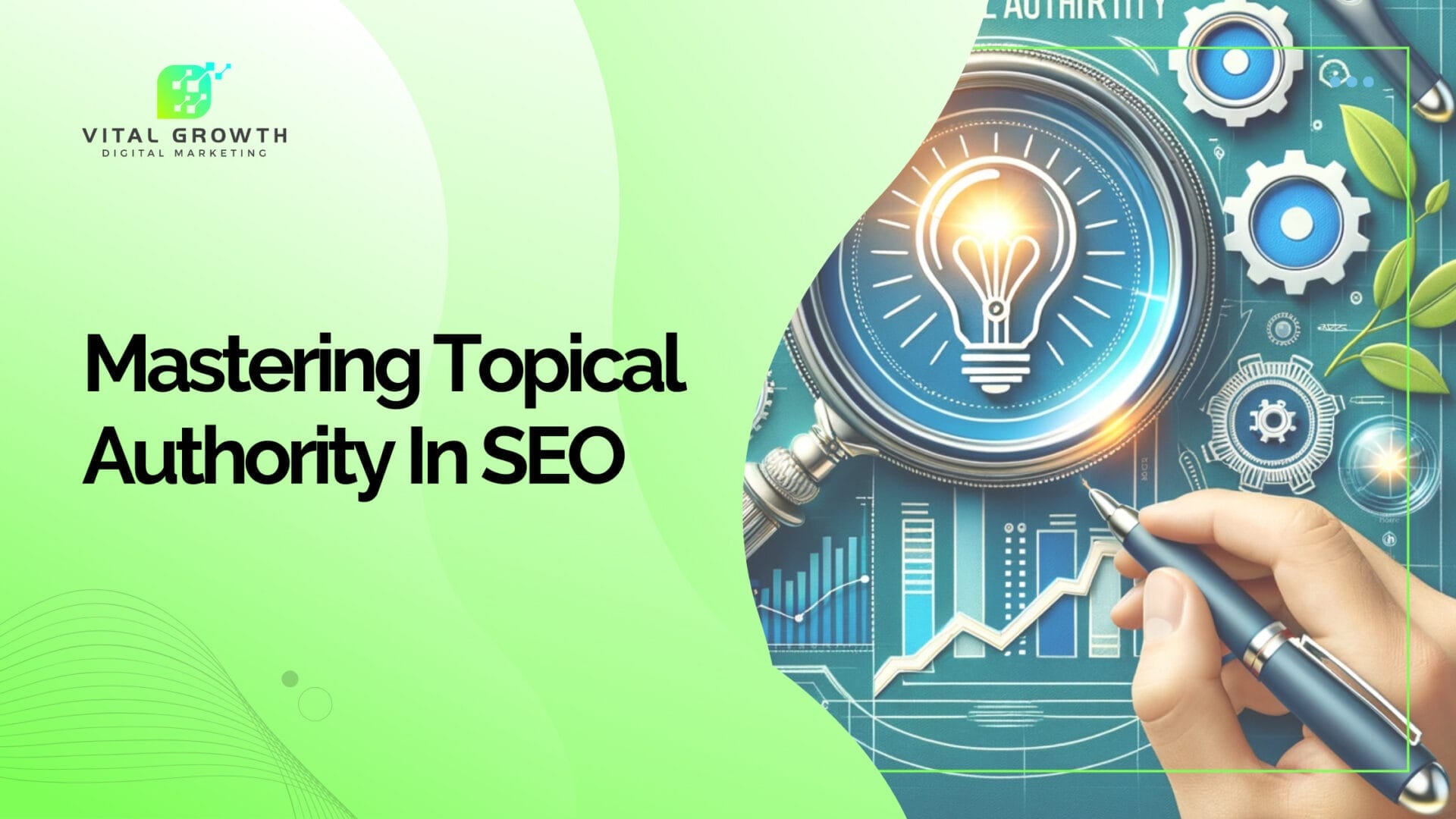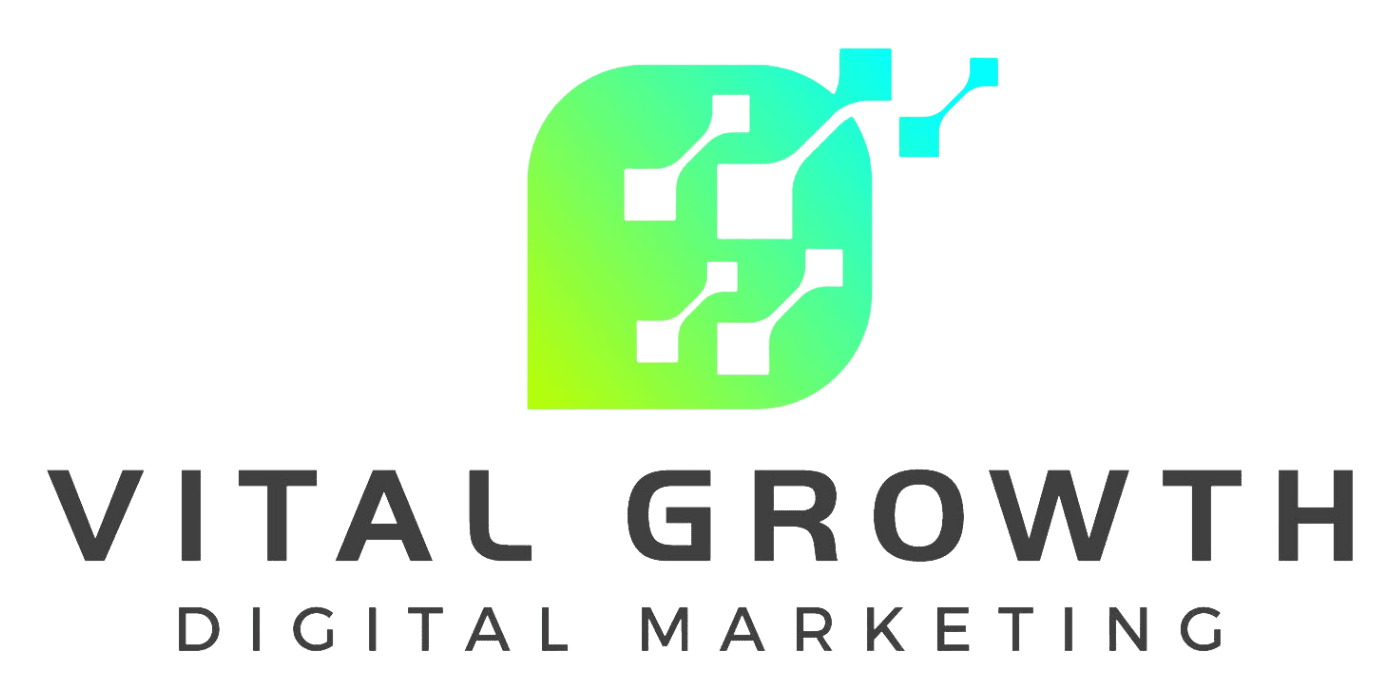When it comes to web design and SEO, aesthetics and optimization merge to shape the success of your website. Today, a well-designed, SEO-friendly website is a powerful tool that can’t be overlooked. It goes beyond crafting a visually pleasing site – it’s about constructing a platform that draws in, engages, and converts your audience. It’s about grasping the complex interplay between your site’s visual allure and the underlying SEO strategies that make it discoverable to your target market and satisfies user’s search queries.
This article will guide your through the importance of merging web design and SEO, taking a deep look into the key elements that make a website both visually engaging and SEO-friendly, and guide you on how to monitor and enhance your website’s SEO performance.
Web Design and SEO Takeaways
High quality SEO integration in web design enhances user experience, boosts organic traffic, and increases website visibility, making it an important factor in a successful website.
Balancing aesthetics and SEO involves creating a user-centric design with visual hierarchy and readability, ensuring both an engaging and SEO-friendly website.
Effective site architecture, mobile optimization, and a strategic content plan are key elements in developing an SEO-friendly web design.
Technical SEO aspects like on-page optimization, structured data, and proper indexing and crawling of content are important for a website’s search engine performance.
Monitoring website performance with analytics tools and ongoing optimization, along with A/B testing for conversion rate optimization, are necessary steps to maintain and enhance a website’s SEO and conversion performance.
The Importance of Integrating SEO in Web Design

The integration of SEO and web design proves beneficial in enhancing user experience, escalating organic traffic, and amplifying website visibility in search engine results. Google’s SEO starter guide strongly recommends engaging an SEO expert to ensure a website design is “search engine-friendly from the bottom up”. This advice can be particularly useful when launching or redesigning a website.
The combination of web design and SEO offers several benefits for your website:
It improves your website’s performance
It facilitates better comprehension of your site by search engines
It increases the possibility of achieving a higher rank in search results.
User Experience and Search Engine Optimization
Creating a balance between user experience and SEO in web design guarantees a website is optimized for both search engine algorithms and human users. The early involvement of both a designer and an SEO expert in a web design project enables the construction of a website architecture that is SEO-optimized and guarantees compatibility between design and optimization.
One key aspect of balancing UX and SEO is internal linking, which helps search engines understand site structure and aids in user navigation. Another important factor is mobile optimization. With the majority of web traffic coming from mobile devices, implementing responsive design ensures a consistent experience across all devices.
Ultimately, enhanced user experience leads to improved rankings and user satisfaction.
Organic Traffic and Visibility
Organic traffic and visibility are integral for business success, facilitating the rise in rankings and traffic, thereby resulting in more customers and improved conversions. The application of SEO principles in web design escalates your website’s search engine rankings and online presence by driving organic traffic and augmenting website visibility in search engine results.
Optimizing website performance for SEO involves:
Selecting a hosting provider with fast loading times, page speed, and high uptime rates
Enabling browser caching
Monitoring site performance with tools such as Google PageSpeed Insights or Wix’s Site Speed Dashboard
Incorporating informative, optimized content in web design
These steps are essential for SEO success, as they ensure your website ranks well and provides value to users.
Key Elements to Consider for SEO-Friendly Web Design
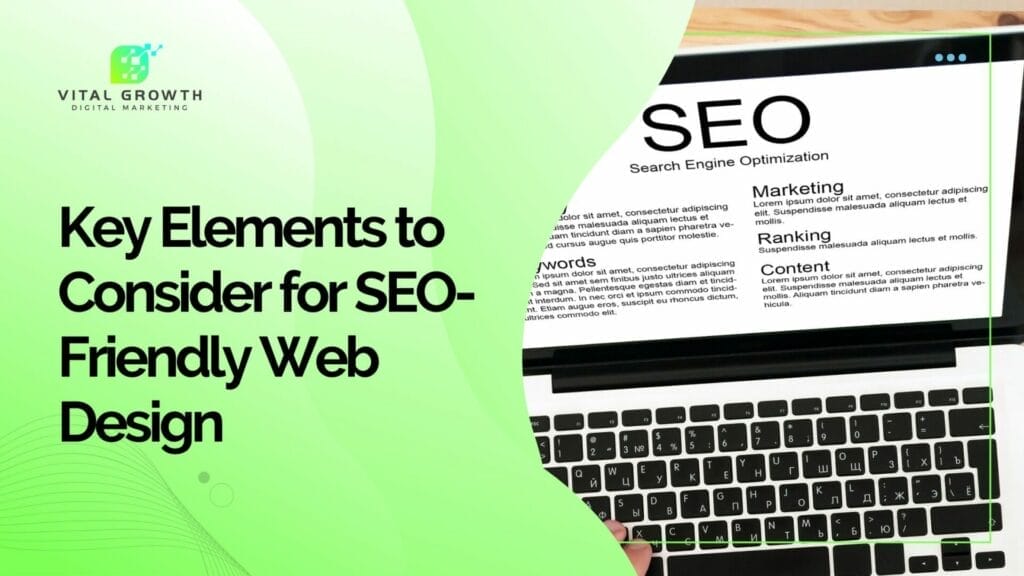
The development of an SEO-friendly web design requires attention to several vital elements, including a well-structured site architecture, mobile optimization, and a strategic content plan aimed at relevant keywords and delivering value to users. By focusing on these elements, you can ensure that your SEO web design not only looks great but also performs well in search engine results.
Site Architecture
A well-structured website architecture can significantly enhance a user’s experience on a website by making it more intuitive and easier to navigate. This is highly important for SEO-friendly web design, as it helps both users and search engines comprehend the website’s structure and content.
To improve your site’s architecture, consider grouping pages together in content buckets and nesting more specific categories under more general categories. This approach not only makes it easier for users to find the information they need but also helps search engines understand the relationships between different pages on your website.
Mobile Optimization
As a significant portion of web traffic, an average of more than 66%, or 2/3rds by a study done by us with our client base, originates from mobile devices, mobile optimization becomes vital for SEO optimization and ensuring an exceptional user experience. Responsive design ensures a consistent experience across all devices, making it easier for users to navigate and engage with your website’s content.
Key factors for developing mobile SEO-friendly websites include creating a mobile-friendly experience, ensuring fast load times and website speed, easy to navigate menu, and utilizing descriptive URLs. By optimizing your website for mobile users, you can ensure that your site performs well, no matter what device your users are accessing it from.
Content Strategy
A content strategy that emphasizes supplying meaningful, pertinent, and engaging content to users while targeting applicable keywords for SEO success. A well-structured site architecture, mobile optimization, and an SEO strategy involving relevant keywords and user value ensures your website secures a good rank in search engine results.
In addition to keyword research, consider incorporating topic clusters into your content strategy. Topic clusters refer to groups of content that are focused on a main topic, and can be advantageous in retaining users on a site for longer by giving them related content to discover. This not only enhances user experience but also helps search engines understand the relationships between different pages on your website.
Technical SEO Aspects in Web Design
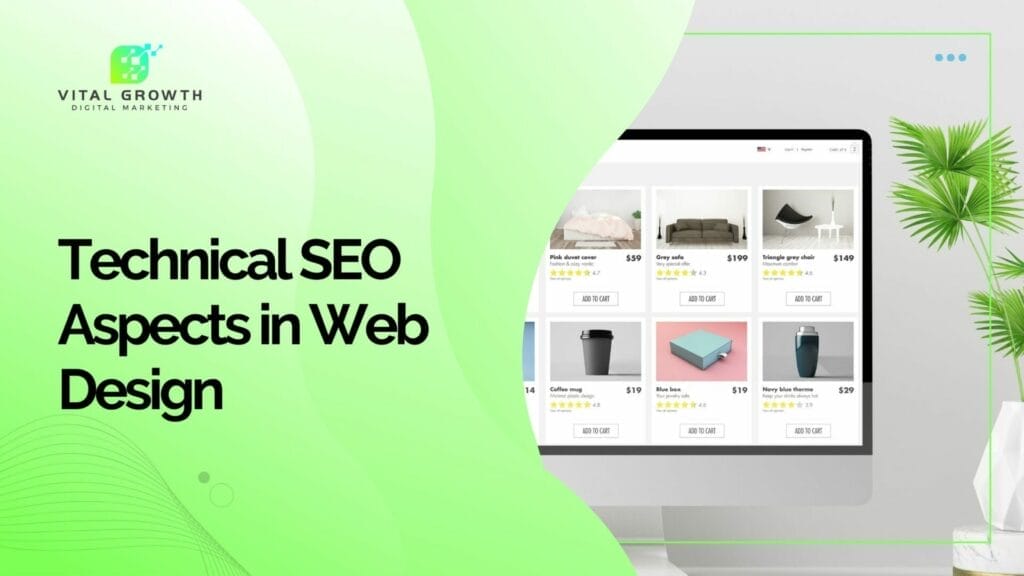
Technical SEO aspects in web design encompass on-page optimization, the implementation of structured data, proper indexing and crawling of website content, among many other things. Directing focus on these aspects promotes your website’s adherence to SEO best practices and ensures commendable performance in search engine results.
On-Page Optimization
On-page optimization entails optimizing components like title tags, meta descriptions, and header tags to enhance search engine rankings and user experience. By implementing effective on-page SEO techniques, you can ensure that your website ranks well in search engine results and provides a great user experience.
Some effective techniques for on-page SEO optimization in web design include:
Optimizing for search intent
Optimizing title tags and meta descriptions
Publishing high-quality content
Formatting headings and content
Optimizing images and other media
Optimizing URLs and internal links
Demonstrating experience, expertise, authoritativeness, and trustworthiness (EEAT)
Use Natural Language Processing, or NLPs
Structured Data
Structured data assists search engines in comprehending and presenting website content more proficiently, resulting in enhanced visibility and enriched results. By incorporating structured data into your website, you can provide additional information and context regarding the content of a webpage, making it more appealing and informative for search results.
Types of structured data that can be used for SEO purposes include JSON-LD, Microdata, and RDFa. By implementing the appropriate structured data markup on your website, you can help search engines better understand your content and improve your website’s visibility in search engine results.
Indexing and Crawling
Indexing and crawling are important for optimizing search engine visibility and enhancing website performance. Making sure that search engines can effectively index and crawl your website’s content is extremely imporant for SEO success and overall website performance.
To ensure a smooth indexing process, you can take the following steps:
Submit your sitemap and URLs to Google Search Console.
Submit your sitemap to Bing Webmasters
Install a SEO plugin to make sure you are using proper SEO techniques
Create a content plan that keeps your website relevant to your field.
Create a content calendar to plan and organize your content.
Link each webpage on your site to other relevant pages to improve navigation and user experience. Make sure you have a plan for this. Over interlinking, or linking at random could have the opposite effect that you are looking for.
Construct quality backlinks to your webpages to increase visibility and authority.
Ensure your site has a straightforward structure and navigable design for search engines.
Following these steps, you can optimize your website for better indexing and visibility in search engine results pages.
Balancing Aesthetics and SEO in Web Design

Harmonizing aesthetics and SEO in web design necessitates constructing an aesthetically pleasing website that also abides by SEO standards, including visual hierarchy, legibility, and user-centric design. By focusing on these elements, you can create a visually captivating website that also performs well in search engine results.
Visual Hierarchy
Visual hierarchy is beneficial for providing an optimal user experience, which subsequently has a positive effect on SEO. By employing the following techniques, you can create a clear visual hierarchy in web design that guides users through your website and improves user experience:
Utilizing elements of size and scale
Employing color and contrast techniques
Making use of whitespace
Implementing a typography hierarchy
Providing visual cues
A well-designed visual hierarchy not only makes your website more visually appealing but also helps users navigate and engage with your content more easily. This, in turn, can lead to higher engagement, longer visit durations, and lower bounce rates, all of which can positively impact your website’s search engine rankings.
Readability and Typography

Readability and typography are important for both user experience and SEO, as they enhance the content’s accessibility and engagement for users. By utilizing big, bold, or sans serif fonts throughout the website, its headers, and its copy blocks, and making the content easy to read for everyone, you can ensure an optimal readability experience.
To assess the readability of your website content for SEO optimization, consider using the following tools which both have free versions:
Hemingway App
Grammarly
These tools can help you identify areas for improvement and ensure that your content is easily accessible and engaging for your users.
User-Centric Design
User-centric design is designed to meet the needs and preferences of users, resulting in an improved user experience and consequent higher search engine rankings.
By focusing on the key principles of user-centric web design, such as:
Designing for the users and their tasks
Maintaining consistency in design elements
Utilizing simple and natural dialogue
Empathizing with the users and their needs
Making data-driven decisions
You can create an SEO friendly website with engaging web pages that cater to your users and perform well in search engine results.
A user-centric design not only enhances the overall user experience but also contributes to the success of your website’s SEO performance. By prioritizing usability and user experience throughout the development process, you can ensure that your website ranks well in search engine results and provides a seamless, enjoyable experience for your users.
Monitoring and Improving Your Website’s SEO Performance
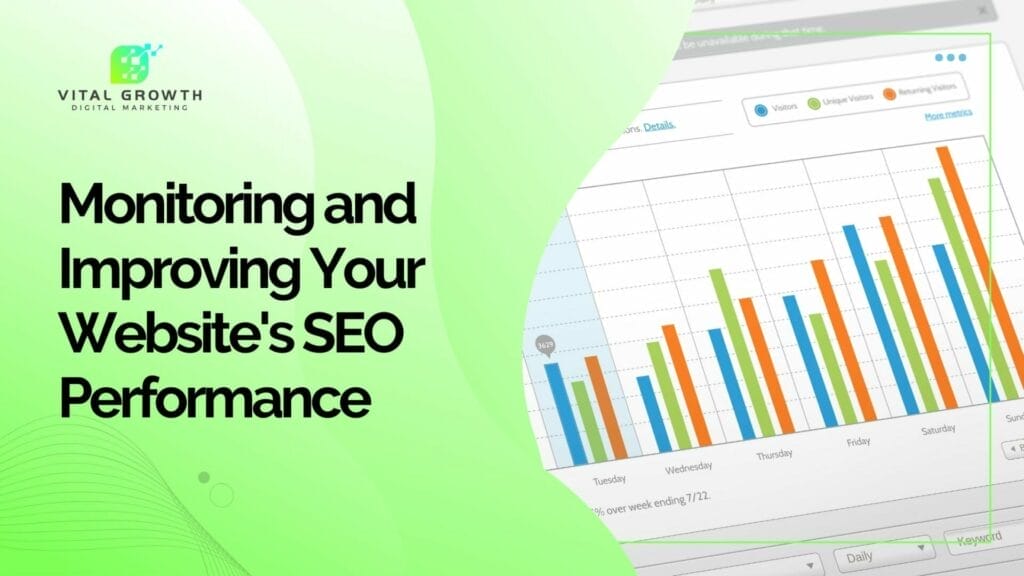
Keeping a track of and enhancing your website’s SEO performance is important for upholding and improving your search engine rankings and overall website success. Employment of analytics and reporting tools, carrying out continuous optimization, and undertaking A/B testing for conversion rate optimization helps maintain the optimization of your website for both SEO and user experience.
Analytics and Reporting
Analytics and reporting tools are essential for monitoring website performance and recognizing potential areas for optimization, thus making sure that your website remains optimized for SEO and user experience. By tracking website performance and identifying areas for improvement, you can make data-driven decisions and optimize your website for both search engines and users.
Some high quality analytics tools for monitoring SEO performance include SEMrush, Google Analytics, Agency Analytics, and Seolyzer. These tools can help you track various SEO metrics such as organic traffic, click-through rate, exit rate, pages per session, average page load time, keyword rankings, search visibility, traffic value, and organic traffic conversions, providing valuable insights into your website’s SEO performance and areas for improvement.
Ongoing Optimization
Regularly updating and refining your website’s content, design, and technical aspects is highly important for SEO success. By focusing on ongoing optimization, you can ensure that your website remains up-to-date and adheres to SEO best practices.
Some strategies for optimizing technical aspects for SEO include:
Ensuring that the website is properly indexed and crawled by search engines
Incorporating structured data to provide additional information to search engines
Optimizing page speed and other technical aspects
Continuously improving and auditing website content
By continually monitoring and optimizing your website for search engine optimization, you can maintain and improve your search engine rankings and overall website performance.
A/B Testing and Conversion Rate Optimization
A/B testing and conversion rate optimization can help you identify the most effective design elements and strategies to optimize user engagement and conversions, ultimately resulting in improved SEO performance.
By conducting A/B tests on your website, you can make data-driven decisions and optimize your website to maximize conversion rates.
Some effective tools for conducting A/B testing on a website for SEO optimization include:
Optimizely
VWO
AB Tasty
Oracle Maxymiser
By utilizing these tools, you can test different design elements and strategies and identify which ones lead to higher conversions and user engagement, ultimately improving your website’s SEO performance.
Web Design and SEO Concluding Thoughts
When it comes to creating a visually captivating and SEO-friendly website, the balance between aesthetics and SEO best practices plays the lead role. It’s like conducting a beautiful orchestra where user experience, organic traffic, site architecture, mobile optimization, content strategy, and technical SEO aspects all play their part in creating a masterpiece that not only looks great but also performs well in the search engine results concert hall.
But the performance optimisations do not end there. To keep the progress going, we need to constantly monitor and improve our website’s SEO performance through the use of analytics, reporting, and A/B testing. This ensures that our website remains a crowd favorite for both users and search engines, ultimately leading to greater online visibility, and conversions, leading to greater success.
Let Vital Growth Digital Marketing Conduct Your SEO Symphony
If the idea of this feels overwhelming, fear not! Vital Growth Digital Marketing is here to help. With years of experience in SEO and Web Design, we can help you strike the right balance between aesthetics and SEO, ensuring your website not only looks visually stunning but also climbs the ranks in search engine results. Contact us today and let us orchestrate your SEO success story!
See our digital marketing services
What is SEO in web designing?
Search Engine Optimization (SEO) is a method of website design that increases its visibility on search engine results pages, driving more relevant users to your content and ultimately boosting traffic and sales. By making your content search-friendly, SEO helps you get more users viewing your content.
Is web design important for SEO?
Good web design is essential for SEO success as it helps to create a foundation for a successful SEO strategy, leading to improved time, money, and rankings. Poor website design can have an adverse effect on SEO so should be avoided.
What are the 4 stages of SEO?
The four stages of SEO are creating a strategy, building your site, creating and publishing content, and promoting your site. Each of these stages is important to understand in order to effectively apply them to any SEO project.
What are some strategies for mobile optimization in web design?
Mobile optimization in web design involves creating a mobile-friendly experience, fast loading times, and descriptive URLs. Be sure to test each page in all screen sizes before publishing them.


